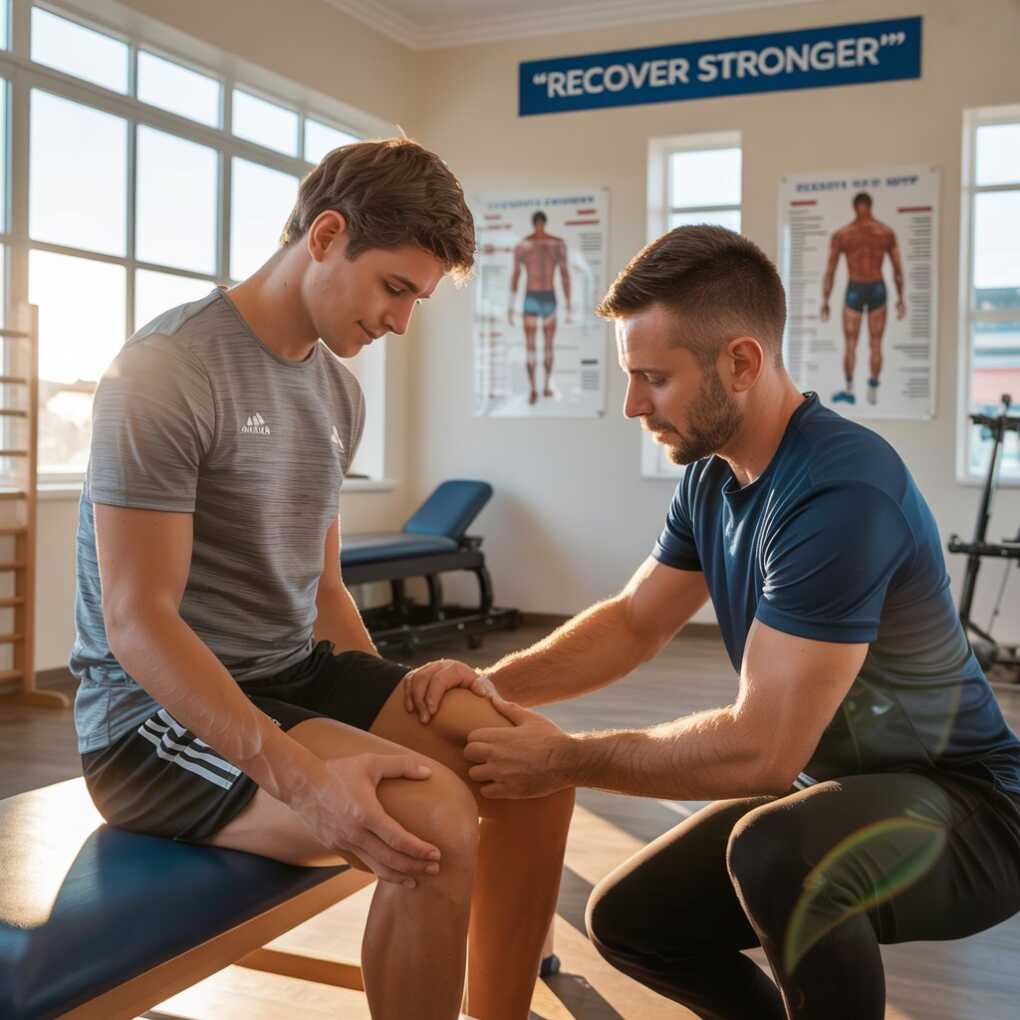Sports are an incredible way to stay active, healthy, and mentally refreshed, but the physical demands placed on the body can sometimes lead to injuries. Whether it’s from overtraining, improper technique, or sudden impact, athletes and casual players alike often encounter setbacks that require professional care. Physiotherapy clinics play an important role in recovery because they not only focus on treating pain but also help individuals regain strength, flexibility, and mobility. We will explore some of the most common sports injuries that bring people into physiotherapy clinics and how tailored treatment approaches allow patients to return safely to their activities while reducing the risk of reinjury.

Types of Common Sports Injuries Addressed in Physiotherapy Clinics
1. Sprains and Strains
Sprains and strains are among the most frequent injuries seen in sports and can affect athletes at any level. A sprain occurs when ligaments—tissues that connect bone to bone—are overstretched or torn, while a strain involves the overstretching or tearing of muscles or tendons. These injuries often happen during activities requiring sudden stops, twists, or impacts, such as soccer, basketball, or tennis. Physiotherapists approach treatment by reducing inflammation in the acute stage through methods like ice therapy, compression, and gentle mobility exercises.
As healing progresses, they guide patients through strengthening programs to restore stability and prevent recurrence. The rehabilitation process is crucial because untreated sprains and strains may lead to chronic instability, reduced range of motion, and long-term pain that limits athletic performance. Physiotherapy at https://fixio.com.au/locations/freshwater-physio/ ensures recovery is not rushed but carefully managed to build resilience for future activity.
2. Tendonitis
Tendonitis is another condition commonly treated in physiotherapy clinics, often linked to repetitive movements in sports such as running, swimming, or weight training. It occurs when a tendon becomes inflamed from overuse or repetitive strain, leading to pain, swelling, and reduced function. Examples include Achilles tendonitis in runners or rotator cuff tendonitis in swimmers. Physiotherapists manage tendonitis by identifying the root cause—such as poor biomechanics, improper footwear, or training errors—and then developing a plan to correct it.
Treatment may include manual therapy, ultrasound, taping techniques, and guided stretching exercises. A progressive strengthening program is usually introduced to improve tendon tolerance, while education is given to modify activity levels temporarily to allow healing. If ignored, tendonitis can turn into a more stubborn condition known as tendinosis, which involves degeneration rather than inflammation. Early physiotherapy treatment helps athletes continue their sport with minimal interruption while avoiding long-term complications.
3. Knee Injuries
The knee is one of the most vulnerable joints in sports due to the stress placed on it during running, jumping, pivoting, and sudden changes in direction. Injuries like anterior cruciate ligament (ACL) tears, meniscus damage, and patellar tracking issues are frequently encountered in physiotherapy clinics. Rehabilitation typically begins with controlling pain and swelling, followed by gentle range-of-motion exercises. As healing progresses, physiotherapists focus on building strength in the quadriceps, hamstrings, and surrounding muscles to support the knee joint.
Balance and proprioception training are also emphasized, as these help athletes regain confidence in their movements. For more severe injuries, such as post-surgical ACL reconstruction, physiotherapists design comprehensive programs that gradually restore function and ensure a safe return to sport. Knee injuries can be life-changing if not managed properly, and physiotherapy plays a central role in preventing further damage and maximizing recovery outcomes.
4. Shoulder Injuries
Shoulder injuries are common in sports that involve throwing, swimming, or overhead movements, such as baseball, volleyball, and weightlifting. Conditions like rotator cuff tears, shoulder impingement, and dislocations can significantly limit athletic performance and daily activities. Physiotherapists use a variety of techniques to treat shoulder injuries, starting with pain management through manual therapy and gentle exercises. Once initial discomfort decreases, strengthening programs are introduced to target stabilizing muscles like the rotator cuff and scapular stabilizers.
Education on proper posture and movement mechanics is also crucial, as poor technique often contributes to shoulder problems. Rehabilitation for the shoulder often requires patience because this joint relies on complex coordination between multiple muscles and ligaments. By progressively building strength, restoring range of motion, and teaching correct movement patterns, physiotherapy helps athletes return to their sport while reducing the likelihood of recurring shoulder issues.
5. Back Injuries
Back injuries, particularly lower back pain, are prevalent in both contact and non-contact sports. Sports like gymnastics, golf, rowing, and weightlifting place high demands on the spine, making athletes susceptible to issues such as muscle strains, disc problems, and postural imbalances. Physiotherapists treat back injuries with a combination of manual therapy, mobility exercises, and core-strengthening routines. Core stability is often emphasized, as weak or imbalanced muscles can place additional stress on the spine. Education on correct lifting techniques, posture, and body mechanics is also part of the rehabilitation process.
For athletes with chronic back pain, physiotherapy provides long-term strategies to manage flare-ups and prevent future problems. Addressing back injuries early through physiotherapy is crucial because untreated conditions can become persistent, limiting both athletic and daily activities. Effective rehabilitation restores mobility, reduces pain, and empowers athletes to maintain strong and healthy backs for the long term.
Conclusion
Sports injuries can be disheartening, but with the right approach, recovery and return to activity are achievable goals. Physiotherapy clinics provide comprehensive treatment plans that address not only the injury itself but also the underlying causes, ensuring long-term health and performance. By combining pain relief, strengthening, mobility training, and preventative strategies, physiotherapy helps athletes of all levels rebuild their confidence and safely return to their sport. The focus is always on long-term recovery, ensuring that once patients heal, they are equipped with the tools and knowledge to prevent future injuries and enjoy their chosen activities with strength and resilience.
